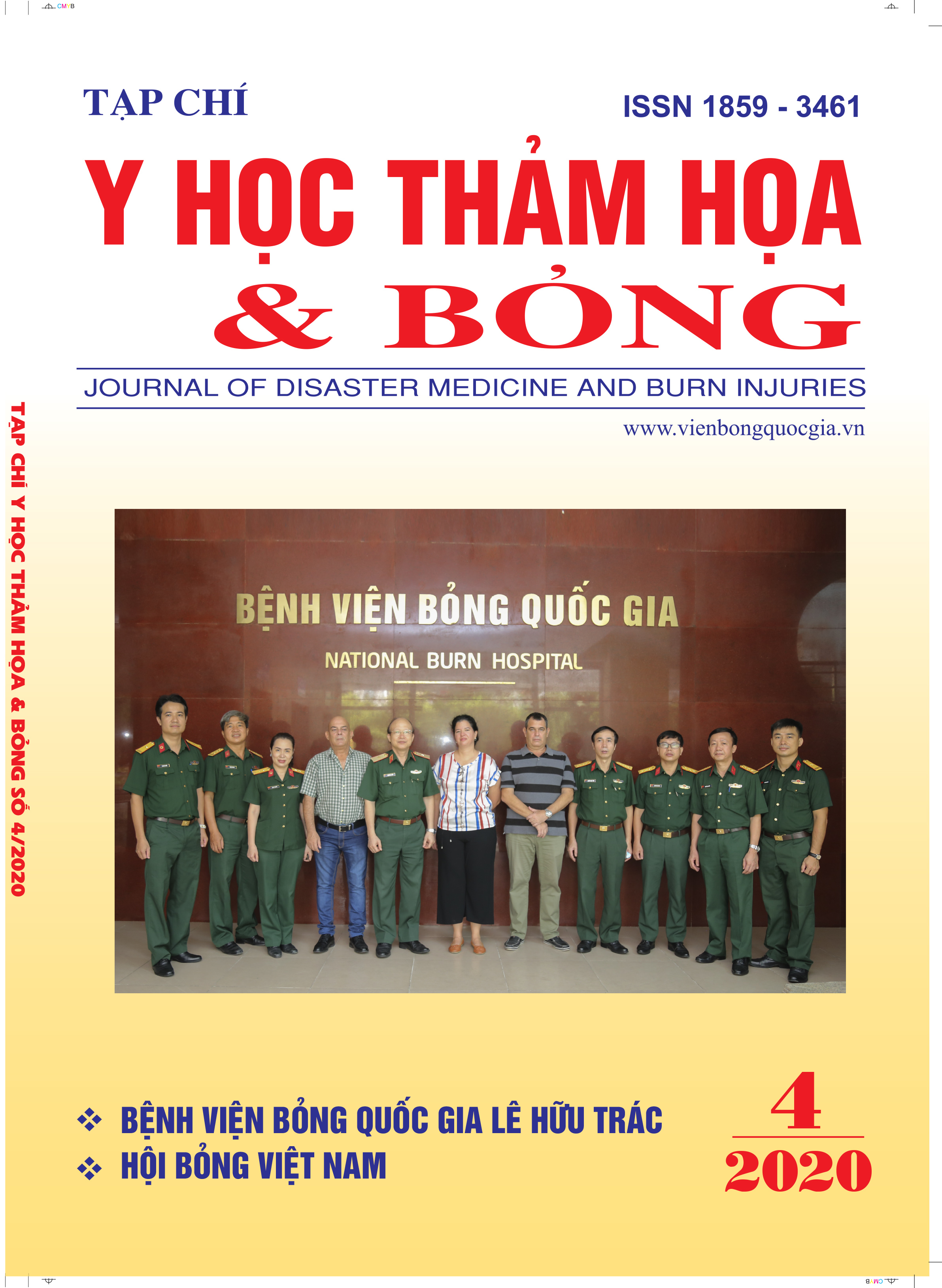Determination of an optimal formula for calculating the energy requirement of a severely adult burn patients.
Main Article Content
Abstract
This study aimed to select an optimal formula for calculating the energy requirement of a severely burned adult patient in the absence of indirect resting energy expenditure (REE).
An observational cohort study was conducted on 62 adult burn patients with a total burn surface area ≥ 20%. REE was measured by using a module on the Carescape R860 ventilation on the third day after the burn. The predicted energy demand was calculated by 8 common formulas in the world. The accuracy of the formula was assessed by the method of Sheiner and Beal.
The results showed that REE measured on the 3rd day after the burn was 2431.87 ± 502.20Kcal/day. Among the formulas, only the Zawacki formula showed the smallest error and reached 18.7 ± 13.7% with an insignificant difference (p = 0.62). Other formulas were over or underestimation of actual demand.
In brief, in case of unavailable indirect calorimetry, the Zawacki formula can be used to calculate the resting energy expenditure for adults severely burn patients.
Article Details
Keywords
Energy demand, resting energy expenditure, optimal formula
References
2. Zawacki B. E., Spitzer K. W., Mason Jr A. D.et al. (1970) Does increased evaporative water loss cause hypermetabolism in burned patients? Annals of Surgery, 171 (2), 236.
3. Sheiner L. B., Beal S. L. (1981) Some suggestions for measuring predictive performance. Journal of pharmacokinetics and biopharmaceutics, 9 (4), 503-512.
4. Graves C., Saffle J., Cochran A. (2009) Actual burn nutrition care practices: an update. Journal of Burn Care & Research, 30 (1), 77-82.
5. Guo F., Zhou H., Wu J.et al. (2020) Prospective Study on Energy Expenditure in Patients With Severe Burns. Journal of Parenteral and Enteral Nutrition,
6. Dickerson R. N., Gervasio J. M., Riley M. L.et al. (2002) Accuracy of predictive methods to estimate resting energy expenditure of thermally‐injured patients. Journal of Parenteral and Enteral Nutrition, 26 (1), 17-29.
7. Shields B. A., Doty K. A., Chung K. K., et al. (2013) Determination of resting energy expenditure after severe burn. Journal of Burn Care & Research, 34 (1), e22-e28.
8. Aulick L. H., Hander E. H., Wilmore D. W.et al. (1979) The relative significance of thermal and metabolic demands on burn hypermetabolism. Journal of Trauma and Acute Care Surgery, 19 (8), 559-566.
9. Honeycutt D., Barrow R., Herndon D. (1992) Cold stress response in patients with severe burns after β-blockade. The Journal of burn care & rehabilitation, 13 (2), 181-186.
10. Herndon D. N., Tompkins R. G. (2004) Support of the metabolic response to burn injury. The Lancet, 363 (9424), 1895-1902.
11. Hart D. W., Wolf S. E., Chinkes D. L., et al. (2000) Determinants of skeletal muscle catabolism after severe burn. Annals of Surgery, 232 (4), 455.


